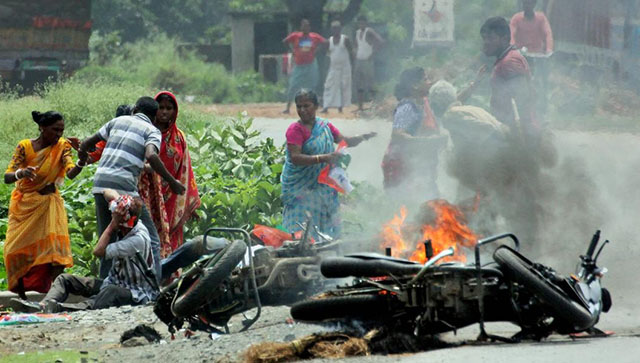On 17 March 1970, CPM goons entered the house of the Sain family in West Bengal’s Bardhaman district. What followed was one of the most brutal incidents of political violence in the state. The attackers gouged out the eyes of the family’s eldest son Naba Sain and hacked his younger brothers Malay and Pranab to death. They then made the brothers’ mother eat rice soaked in her sons’ blood. The Sain family was targeted because they supported Congress. In a state where violence is the most visible form of political expression, a democratic choice like supporting the party you like can turn deadly. As bone-chilling as it may seem, the spree of political killings that West Bengal witnessed during the recently concluded panchayat polls is only a continuity of the violence that has been ingrained in the state’s politics for decades. While political violence has happened in other states too, the scale, frequency, and modus operandi are unique to West Bengal. In states, such as Uttar Pradesh and Bihar, gun violence during elections in the past reflected the interplay of politics and gangsters. In present-day West Bengal, the use of homemade crude bombs and a propensity to heighten the goriness of crimes—the predominant use of blades and knives—show how violence has penetrated into rural households. Interestingly, in the state, political violence has absorbed other forms of violence, such as those along caste and class lines. Such form of violence peaked and became a daily occurrence during the 35-year Left rule (1977-2011). But, the brutality predates the Left and goes back to the Congress rule. Siddhartha Shankar Ray was the last Congress chief minister of West Bengal before the Left came to power. Ruling from 1972 to 1977, he oversaw a turbulent period in the state and as well as Indian history – in the form of the Naxal movement and the Emergency (1975-77). Ray’s rule was marked by the use of state machinery to crush violent forces and dissent, but inter-party clashes were still rare. This changed under the Left rule during which such attacks became common. The political murders continued even after the Left was defeated by the current ruling party Trinamool Congress in the 2011 Assembly polls. It was first the Congress versus Left, then Left versus TMC and now the TMC has been blamed for attacks by all other parties in the state. The common thread that binds all regimes in West Bengal is violence. But there are other reasons that have made political violence unique to Bengal and they lie at the grassroots level. How parties in power ensure continuity of violence In Bengal, especially in rural areas, one’s political allegiance overrides all other identities like caste. Despite being endangering, political empowerment is also key to prosperity in a resource-scarce state where industries are yet to find a foothold and jobs are limited. Often economic resources like land are in the control of local politicians and a lack of employment means that several youths end up becoming political henchmen. The state’s ruling parties from Left to TMC ensured the continuity of this factor by maintaining a belligerent stand against industries. The most infamous case is the 2008 Tata Nano Singur controversy. In a somewhat uncharacteristic move, the Left government pushed for industrialisation by acquiring farmland for a Tata Nano factory in Singur. West Bengal chief minister Mamata Banerjee who was then an Opposition leader led a movement against the upcoming project citing injustice to farmers. Tata Group eventually pulled out of the state. The controversy propelled Banerjee to power and also served as the death knell to industries. How rooted political brutality in Bengal is reflected by the fact that at least 19 people across party lines have been killed during the ongoing Panchayat polls despite the Calcutta High Court ordering the deployment of central forces for the election. The court had also passed a direction for central forces to remain in the state for ten days after the declaration of results. “Holding elections cannot be a license for violence and HC has seen earlier instances of violence… elections cannot be accompanied by violence..if persons are not able to file their nominations and if they are finished off while they are going to file it then, where is the free and fair election?” the court had said. But in Bengal, it’s a vicious circle once you use violence to come to power, you have to continue the brutality to stay in control over fear of reprisals from political opponents if they win elections.
As bone chilling as it may seem, the spree of political killings that West Bengal witnessed during the recently concluded panchayat polls is only a continuity of the violence that has been ingrained in the state’s politics for decades
Advertisement
End of Article
Written by Annu Kaushik
Annu Kaushik is a Senior Sub Editor at Firstpost. She writes about international affairs and history. You can find her on Twitter @AnnuKaushik253 see more


)

)
)
)
)
)
)
)
)



